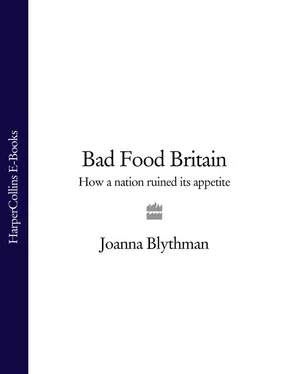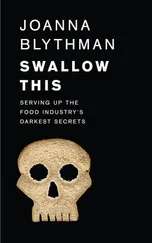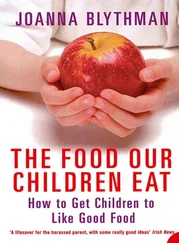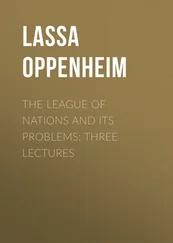The pages of weekend supplements are populated by beautiful people plucked from a nation of lip-licking gastronomes, a nation that grows food, cooks food and rejoices in the eating of it. They live in lofts and stylish townhouses, or – depending on the newspaper’s readership profile – in covetable country houses and holly-hocked cottages. Wherever they are located, these people are ultra-literate in food and gastronomy. They take a great interest in foodie arcana, soaking up articles on items such as shade-grown peppercorns and salted, sundried Sardinian tuna roe, like children devouring the latest Harry Potter book. They weigh up the pros and cons of Lacanche ranges versus Agas. It matters to them that their crème brulée is correctly caramelized, so they give each other blow torches as Christmas presents. They are endlessly fascinated with the contents of famous people’s refrigerators. Their own capacious American-style, double-door fridges are filled with organic goat’s milk yogurt, juice squeezed from English heritage apples and Toulouse sausages made from rare breed, acorn-fed porkers. They savour obscure cocktails dreamed up by someone purporting to be the world’s most innovative mixologist. Their shelves are stacked with at least six different estate-bottled extra virgin olive oils. Their drawers are filled with expensive Japanese knives as recommended by Bad Boy chef, Anthony Bourdain. These people constantly give dinner parties or, more fashionable these days, informal, relaxed ‘suppers’ for foodie friends. They are tuned into every little nuance of food provenance, seeking out products of impeccable pedigree as they navigate their way around farmers’ markets, specialist food shops and mail order companies supplying everything from samphire to smoked eel. When you see the picture of them sitting around their craft-made dinner table, hewn from a vast trunk of fallen oak or elm by a local architect who downshifted to the country, they are surrounded either by adorable, food-appreciating offspring weaned on puréed allotment parsnips, or by stimulating food enthusiast guests. Attentive readers of Heat or Hello! magazines may even be able to spot the odd celebrity peeping out from their assembled ranks.
And you know what? They don’t exist. Correction – they account for a vanishingly small percentage of the British population. Anyone from abroad who skims through these supplements or switches on UK television could be forgiven for gaining the impression that Britain is a country that celebrates matters alimentary, one that devotes huge swathes of its waking time to living and breathing food. In fact this is merely a construction of how the British like to see themselves, as a switched-on, fully-participatory food culture. Our diligently prepared diet of ‘what to eat, where to buy it’ foodie lifestyle is engineered and highly accomplished, but the edifice is all the more audacious because of the scale of the lie it sells. Welcome to the peculiarly British world of food pornography, where watching other people cooking food or talking about cooking food has become a substitute for doing it yourself. Chef Simon Hopkinson put his finger on it when he wrote:
‘Something seems to be ever so slightly rotten in the state of the British kitchen just now. I sometimes feel that we have all but lost the grasp of how to cook nicely at all. We watch endless cookery programmes, but prefer, finally, to spend lots of money on supermarket ready-meals while idly turning the pages of spotlessly clean cookery books until the microwave pings.’
The more media space food and cooking occupies in Britain, the less it reflects any grass roots practical activity. We have become a nation of food voyeurs. The broadcaster Jeremy Paxman provided an explanation for this apparent contradiction when asked if he was interested at all in food. ‘Well, I would be if I had more time, but it’s one of those things that’s gone to the wall as life has got busier,’ he explained. ‘I might read a recipe and think “That sounds absolutely delicious”, or “That seems an interesting idea”. So I tear out the page but never make the recipe.’ Mr Paxman speaks for the nation in this respect. It has a theoretical interest in cooking and earnestly means to get around to doing it at some point. But when time is at a premium and there is too much to do, then cooking, being an optional extra as opposed to a core British activity, is the first thing that must go. And yet the British continue to turn out one glossy cookbook after another. As the Evening Standard ’s Literary Editor, David Sexton, observed, their marketability is more to do with the generous dollop of lifestyle with which they are garnished, than the recipes. ‘Such incessant activity is only achieved, of course, by emphasizing everything but the food … We are sold instead the personality of the cook, the romance of the foreign journey, the superior lifestyle that somehow the food is supposed to supply. Recipes become almost irrelevant. Now the cookbook is not a manual at all but rather an aberrant species of literary composition, one of the most baroque products of the age.’
Britain has now built a lovingly-assembled, reassuring image of itself as a country that has undergone a second coming on the food front, but unfortunately this is not predicated on any day to day reality. Quite the opposite. We have become detached from reality by persuading ourselves that the frequency of practical cooking is no longer the most telling indicator of a country’s culinary health. Just as agony aunts will advise that in their experience, infrequent sex is often a sign of a relationship in terminal decline, Britain’s reluctance to cook suggests that all is not well in its relationship with food. But the British are in denial. Rather than face this unpalatable truth and do something about it, we have preferred to buy into the myth that a diet of well-chosen ‘tried and tested’ processed meals and savvy eating out is a viable substitute for hands-on cooking.
The last time significant sections of the British population actually showed any signs of seriously improving their cooking skills, and hence the quality of the food they ate, was in the heyday of Delia Smith. Delia caught the BBC’s eye at the end of the 1960s with cookery columns in the Daily Mirror , the Evening Standard and the Radio Times. Her television career began in 1973 with the BBC series Family Fare , a title which now would be dismissed out of hand by commissioning editors because of its in-built assumption that viewers might be interested in cooking family meals.
Family Fare proved so popular, however, that after running for two years, it was followed in 1975 by the mega-series Delia’s Cookery Course. The aim of this major series, which was broadcast repeatedly over more than a decade, was systematically to take viewers through the basics of cooking and teach fundamental techniques to home cooks. The goal was unashamedly educational – Delia’s series came under the auspices of the BBC’s education programming – and what she taught on screen was backed up by affordable paperback manuals filled with easy-to-follow, well-tested recipes which, if instructions were followed, would guarantee sound results. It became the model for other influential series in the same education slot: Madhur Jaffrey’s Indian Cookery in 1982 and Ken Hom’s Chinese Cookery in 1984. These presenters all shared the same neutrally pleasant but essentially functional approach: We are here to teach a practical skill. You are watching because you want to learn so that you can try it out.
Delia’s style of presentation was that of an ever so slightly glamorous domestic science teacher: encouraging, straightforward, business-like and not at all show-offy. She assumed the traditional female cookery demonstrator’s pose, face on to the camera, standing behind a worktop covered with basic kitchen equipment and a small sea of glass bowls, and she took viewers through a few recipes with thoroughness and detail, flagging up possible variations on the theme. She communicated her knowledge of cookery in a factual way, taking nothing for granted, stopping regularly to explain or introduce a new ingredient or the usage of a less common item of kitchen equipment. Her attitude was not a patronizing ‘Poor you, haven’t you heard of balsamic vinegar? Oh do keep up!’ but an unthreatening ‘Here’s an interesting Italian vinegar that I like and I think you might like too’. Delia came over more like an approachable member of the local Women’s Institute than a scion of some elite society of food connoisseurs. She did not fit the mould of the distinguished, upper-class, English cookery writers, such as the wonderfully acerbic memsahib Elizabeth David, or the erudite, well-travelled Jane Grigson. They had performed a stalwart service by helping to drag British food out of its post-war austerity, but they influenced a select audience of people rather like themselves. Whether or not she consciously set out to do so, Delia Smith became a food democrat whose mission was to broaden the food knowledge and cooking capability of the great mass of ordinary Britons. As such she developed a strongly female following who found her recipes realistic and do-able.
Читать дальше












